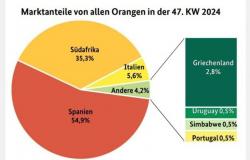Agents remain limited for the moment to content generation and fairly basic actions. Still, the potential for the future is there.
Generative AI is at the center of all conversations in the field of collaborative work applications. For Bastien Le Lann, associate director at the French consulting firm Lecko, the collaborative-oriented gen AI market is divided into two main families. “On the one hand, we have a path historically supported by the two giants in the field, Microsoft with its Copilot offering and Google with Gemini. It consists of building generative AI from content, with a view, for example, to synthesizing meetings , to produce document summaries or even to answer questions. On the other hand, we find publishers from multiple backgrounds who promote the use of agents to automate tasks to enrich collaboration. the person concerned.
For the Lecko consultant, these two approaches are likely to converge. A movement that we are already observing following the launch by Microsoft of an agent platform designed for its Copilot assistant integrated into its Microsoft 365 suite. According to the publisher's definition, “agents are AI assistants designed to automate and execute business processes, in collaboration with or in service of humans. Their capability ranges from simple agents based on question-and-answer interactions, to agents that perform repetitive tasks, to more advanced, fully-featured agents. autonomous.” For his part, Didier Gaultier, head of AI at Orange Business Digital Services, weighs in: “We are still very far from agents who could make decisions instead of humans within the collaborative flow. The model we have today 'today are not sufficiently reliable.'
The vision of 100% autonomous agents
For its part, Salesforce wants to believe it. “Agents will have a profound impact on teamwork and productivity. This technology potentially has the capacity to perform actions for employees and replace them during nights or weekends, including to orchestrate their interactions,” says Peter Doolan, chief customer officer of Slack, the team messaging platform acquired by Salesforce in 2021.
During its global event held from September 17 to 19 in San Francisco, Salesforce announced a whole series of agents, based on third-party technology, to serve its collaborative messaging. Among those launched in final version is Adobe Express which is designed to generate personalized content: presentations, media campaigns, publications on social networks… But also an agent based on the online storage service Box, which is designed to analyze contracts, answer questions about the competitive landscape based on internal documents, or even summarize reports. Other agents available: a Cohere agent which comes in the form of a conversational assistant integrated into Slack, or a Writer agent which focuses on content writing.
“Some providers like OpenAI or Anthropic sell off-the-shelf agents that activate tasks”
“We also provide an environment for our customers to build their own agents,” adds Peter Doolan. “These AIs benefit from the entire business context of Slack to best answer user questions: the history of exchanges, the contents of conversational channels, etc.”
It is clear that all of the examples mentioned above simply enrich existing content with a layer of generative AI. All these bots do not make decisions, they respond to requests submitted to them. Salesforce nevertheless claims that its Agentforce platform for Slack allows you to build actionable agents. “Similarly, many suppliers market off-the-shelf agents that activate tasks. In the digital workplace niche, this is the case of LumApps, Powell, Jalios, Mozzaik, Sociabble and Elium. Proof that the approaches are converging. There are also many pure players, first and foremost Elqano. The agents of these players can process incoming requests via email or respond to requests to create new team spaces,” notes Bastien Le. Lann. “It’s a new way of doing automation that was until now supported by solutions like Zapier, IFTTT or even Power Automate.” Here, these are actions implemented by a bot. The fact remains that they are limited to routines without making impactful decisions for the organization.
The agents offered by Microsoft around Copilot are in line with this logic. An agent qualified as a facilitator, for example, makes videoconferences more fluid. Supporting nine languages, including French, it takes notes in real time and summarizes the discussions. The same goes for an interpreting agent who translates conversations as they happen by imitating the voice of the speaker. Finally, a project management-oriented agent manages the assignment of tasks, their monitoring, reminders and notifications and generates status reports. Nowhere is there any question of making key decisions in place of humans. These products simply make collaboration more fluid.
A realization within two years
And Peter Doolan at Salesforce clarifies: “The vision we have of an agent who will be able to take 100% control over the collaborative work of an employee is not for now. This revolution will take place in the two “We will move from very basic actions to the execution of much more complex tasks and workflows that can be implemented continuously.” Peter Doolan continues: “For example, in the case where two managers discuss an HR policy, in terms of relocation or promotion, an agent can provide them with answers based on the company's HR history. He can then put independently update the HR system accordingly and then carry out an operational workflow based on the decision taken. Another example, an agent could find within an organization a profile with particular skills based on their knowledge base to respond. to a given project problem Then organize yourself. an appointment with this person by speaking with the latter's agent.” We're not there yet.
As with generative AI in the broad sense, an agent will involve fine-grained division of content to arrive at effective responses. “In the opposite case, the answers will be much too general,” recognizes Bastien Le Lann. “For the bot that we are developing as part of our annual study on digital workplaces, we have deployed a trigger which allows us to directly query the comparative document of market solutions in the event that we have a question on the subject. This which prevents the agent from scanning the entire repository. The more constrained the documentary base, the better the response.” Depending on the requests, the response format can also be adapted. “In the case of an IT help desk, if an employee has had their laptop stolen, it will be necessary to highlight the correct procedure and ask the contact person to contact the right person,” concludes the Lecko consultant.






